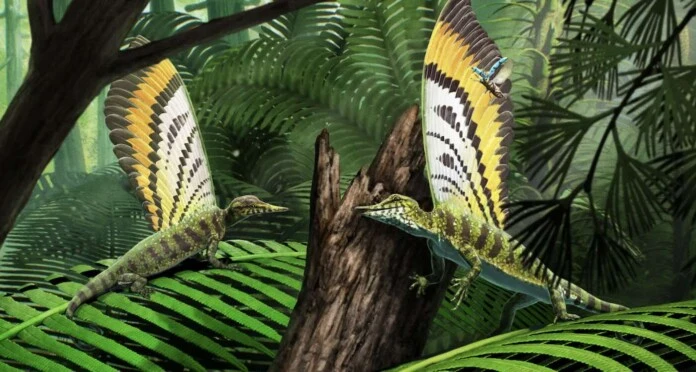Newly Discovered 247-Million-Year-Old Reptile With Massive Crest Baffles Scientists
A newly identified species of Triassic reptile with a ridiculously large back crest has left scientists both amazed and puzzled.
The reptile, named Mirasaura (meaning “wondrous reptile”), lived about 247 million years ago and sported a row of tall, dramatic appendages—some reaching up to 6 inches in height. These structures aren’t made of skin like those of pterosaurs, feathers like in raptors and birds, or even fur. In fact, they’re so unusual that Mirasaura is now helping scientists investigate the deep evolutionary origins of all kinds of body protrusions.
At their core, structures like feathers and hair are complex appendages with critical roles—offering insulation, aiding sensation, enabling flight, and playing key roles in display. These features evolved separately in the stem lineages of birds and mammals. But researchers believe the genetic toolkit for creating them stretches back even further, deep into the shared ancestry of amniotes—a group that includes reptiles, birds, and mammals.
A “Wondrous Reptile” From the Triassic
In a paper published this week in Nature, lead author Stephan Spiekman and his colleagues describe Mirasaura, a small reptile with a bird-like skull. Despite the resemblance, it doesn’t belong to the bird lineage but to a group called Drepanosauromorpha, an extinct clade of quirky, tree-dwelling reptiles.
The Triassic Period—long before the rise of dinosaurs—was a time of explosive reptilian diversity. Many modern reptiles, including lizards, turtles, and crocodilians, trace their origins back to this era.
Rediscovered After Nearly a Century
The first fossils of Mirasaura were actually found in northeastern France in the 1930s, but for decades were misidentified—or dismissed altogether. Some scientists thought they were fragments of fish fins, insect wings, or even plant parts.
Thanks to renewed efforts and advanced preparation techniques at the State Museum of Natural History in Stuttgart, researchers recently examined two well-preserved skeletons and more than 80 additional specimens, many containing preserved soft tissue — an extraordinary rarity for fossils this ancient.
A Crest Like No Other
Preserved tissues revealed that the appendages contain melanosomes, pigment-producing cells found in feathers, fur, and skin. Interestingly, these cells are more similar to those in bird feathers than to reptile scales or mammalian hair — yet the appendages themselves lack the branching structure of true feathers.
This suggests that reptiles may have developed complex external features like crests independently, long before the emergence of birds. It’s a major clue into how features like feathers and hair might have evolved multiple times in different lineages.
“These appendages must have been a striking and unusual feature of the animal’s appearance,” said Dr. Richard Prum, a paleoecologist at Yale University. “They also must have been awkward to carry around, given that the longest is more than one-third of the length of the entire creature.”
So What Was the Crest For?
Spiekman and his team ruled out camouflage or flight as possible functions. Instead, they suggest the crest might have been used for visual signaling—perhaps to attract mates, or to deter predators, like the false eyes on butterfly wings.
Whatever the reason, Mirasaura’s crest is unlike anything scientists have seen before—and it may be one of the earliest examples of elaborate display structures in reptiles.
This discovery doesn’t just shed light on an obscure prehistoric animal — it opens a new window into the ancient origins of the feathers and fur we’re familiar with today.
